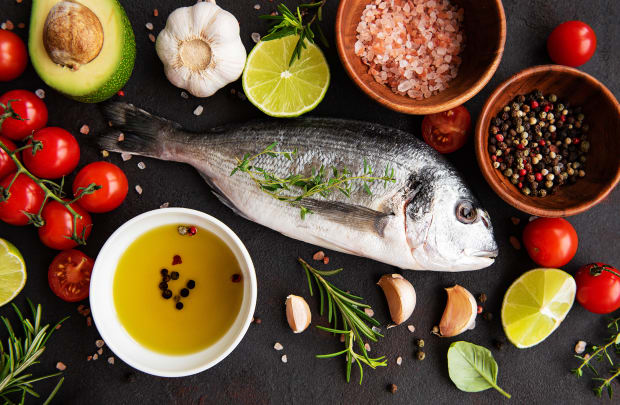- Like
- SHARE
- Digg
- Del
- Tumblr
- VKontakte
- Flattr
- Buffer
- Love This
- Save
- Odnoklassniki
- Meneame
- Blogger
- Amazon
- Yahoo Mail
- Gmail
- AOL
- Newsvine
- HackerNews
- Evernote
- MySpace
- Mail.ru
- Viadeo
- Line
- Comments
- Yummly
- SMS
- Viber
- Telegram
- JOIN
- Skype
- Facebook Messenger
- Kakao
- LiveJournal
- Yammer
- Edgar
- Fintel
- Mix
- Instapaper
- Copy Link
Seafood cuts the risk for heart disease, cancer, Alzheimer’s, stroke, diabetes, and inflammatory diseases such as rheumatoid arthritis.
Adobe Stock
Years ago, when I was struggling to come up with my own set of ethics when it came to eating animals, I came across this passage: “If you’re used to preparing fish that’s already been filleted, I highly recommend grilling a whole fish at least once.
It will give you an immediate sense of your food’s animal origins, and the flavors and eating experience are somehow elevated. I can’t explain it, but you’ll know what I mean when you try it.”
That passage was wise and prophetic. It addressed the very nature of our relationship with the things that we eat. It suggested that by being more in touch with the source of our food, we could deepen our relationship with that food, enrich our experience of eating it, and perhaps even make more conscious choices about what exactly to include and exclude from our diets.
It might not surprise you to learn that this passage was written by Chef Jeannette Bessinger. And what she says is true. The process of grilling the whole fish does somehow enhance the experience. Just give it a try, and you’ll see.
Notes from the Clean Food Coach:
Tips for choosing a good grilling fish:
- Choose a mild fish and make sure it’s ultra-fresh. It should smell clean, not at all fishy, and the eyes should be clear, not heavily clouded over. Plan to buy it (or catch it) the same day you cook it.
- Ask if the fish seller has any local catch in the back. Often these are the best fish, but they aren’t on display because people generally ask for the more expensive, imported choices.
- To support more even grilling, choose a few smaller fish (2–2.5 pounds, at least 2 inches thick) rather than one large one.
- Unless you know how to do it yourself, ask that your fish be gutted and scaled for you, with the head and tail left intact.
- You can use any uncooked fins, tails, heads, and/or bones (cooked or uncooked) or seafood shells to make fragrant fish broth for excellent fish soups and stews. The easiest method is to place everything in your slow cooker, generously cover with cold water, bring to a boil on the high setting, then reduce to low without opening the cover and cook 8 hours to overnight. Strain out all solid matter and refrigerate or freeze the broth for future use.
Featured Ingredient: Fish
Given how confusing and contradictory health advice from the “experts” often is, it’s refreshing to find a principle upon which absolutely everyone agrees: Eat fish!
Fish is a high-protein, low-calorie food that provides a whole range of health benefits, from the heart to the brain. Fish high in omega-3s and low in contaminants include wild salmon from Alaska (fresh, frozen, and canned), Atlantic mackerel and herring, sardines, sablefish, anchovies, and farmed oysters.
White-fleshed fish, on the other hand, is loaded with vitamins and minerals while being incredibly low in calories, but it rarely contains a significant amount of omega 3s. Almost all fish, however—with the possible exception of some farmed salmon—are naturally low in pro-inflammatory omega-6s, and that’s a very good thing.
The American Heart Association recommends that we eat at least two fish meals a week. This recommendation is also included in the USDA’s dietary guidelines. The nutrients found in seafood help reduce risk of death by heart attack and prevent a host of chronic health problems and terminal illnesses. Seafood cuts the risk for heart disease, cancer, Alzheimer’s, stroke, diabetes, and inflammatory diseases such as rheumatoid arthritis, all of which has been documented in dozens of published studies.
Understand that when I’m waxing on and on about the virtues of fish, I’m not talking about “mystery fish nuggets deep fried in recycled vegetable oil” or some similar Frankenfood from the local fast-food emporium. I’m talking the real deal. Research shows that more nutrients are retained in fish that is baked or broiled, rather than processed and/or fried. (But you knew that, didn’t you?) And to protect against viral and germ contamination, handle uncooked seafood with care, as you would any meat or poultry.


